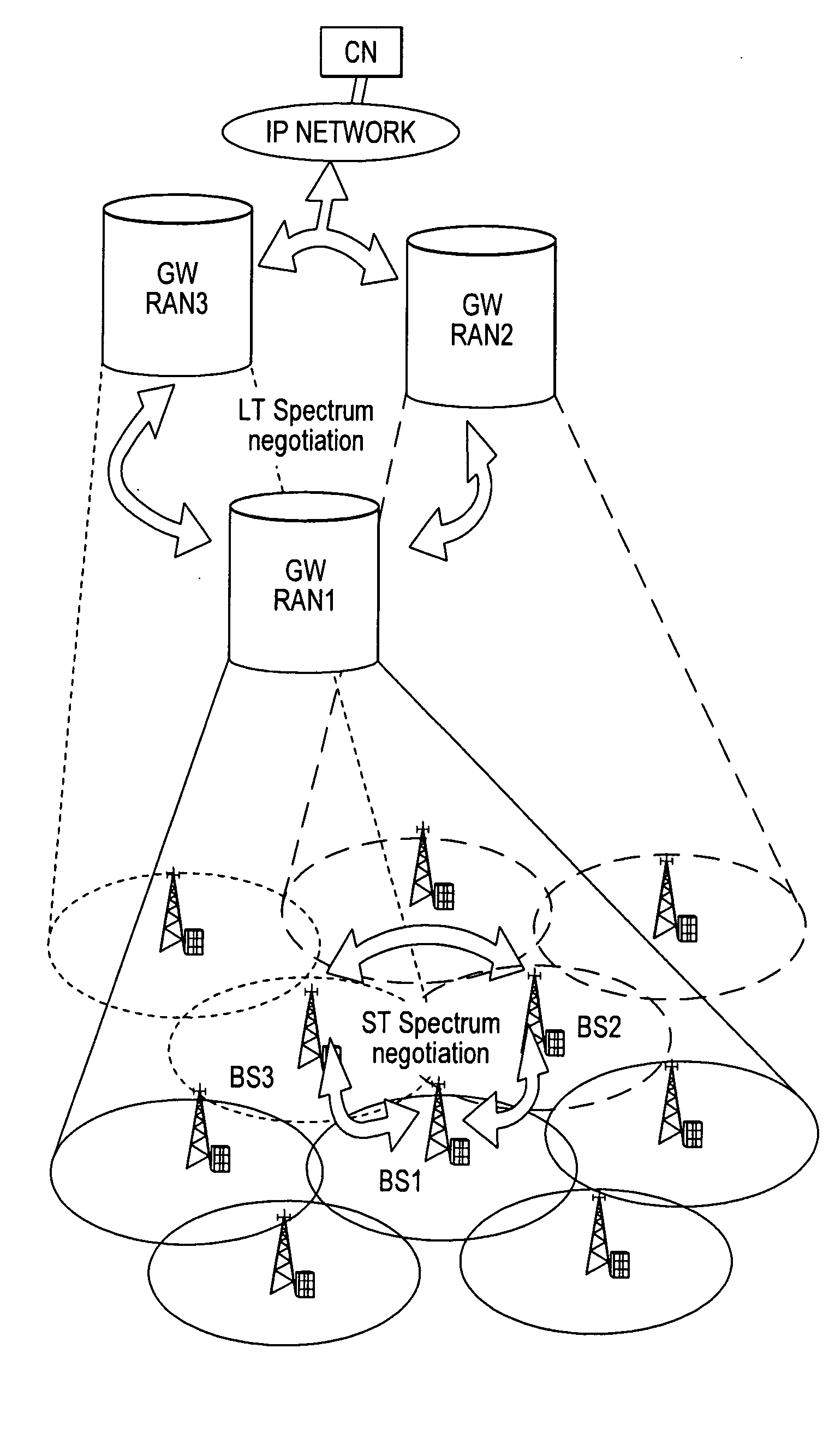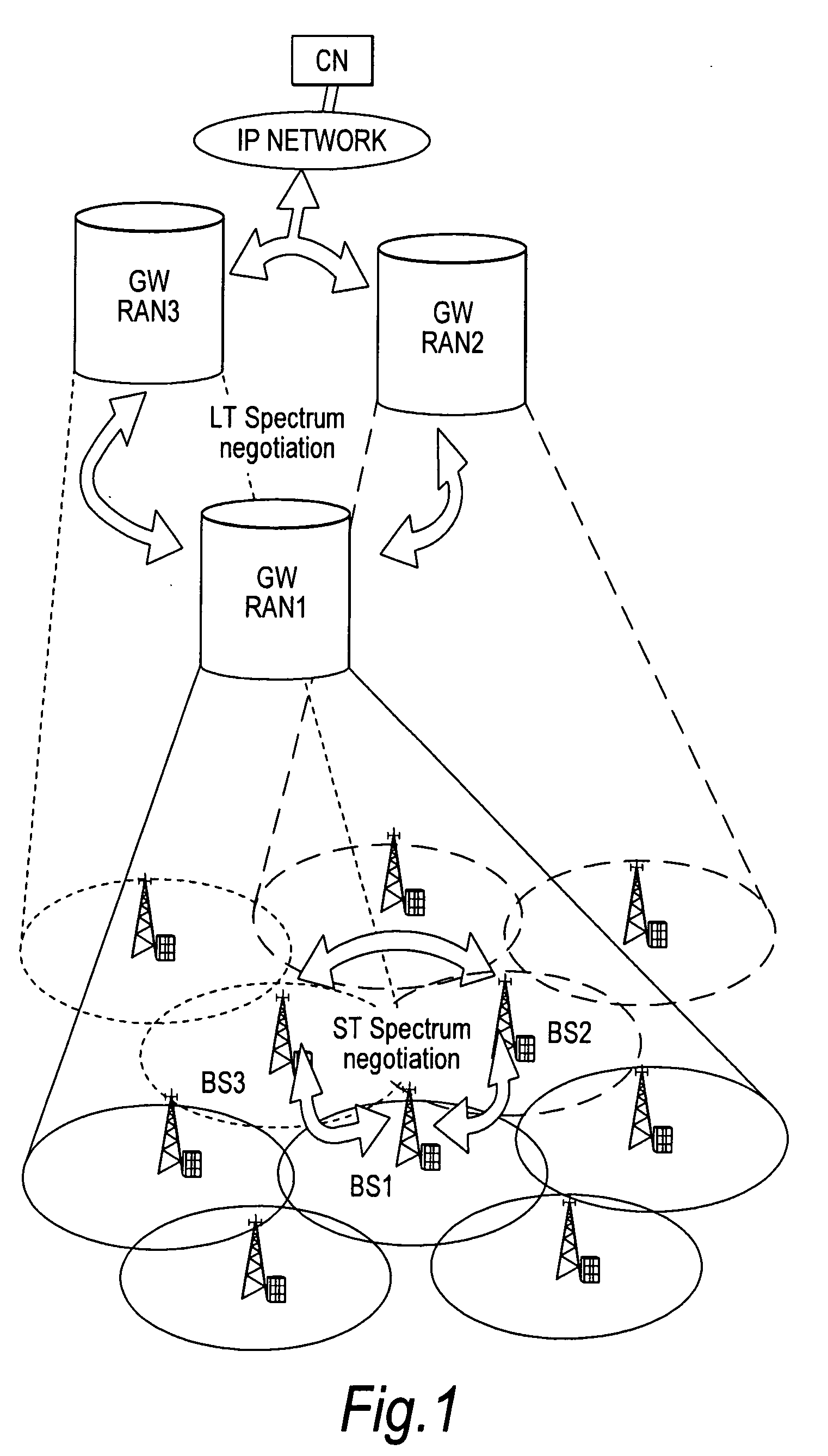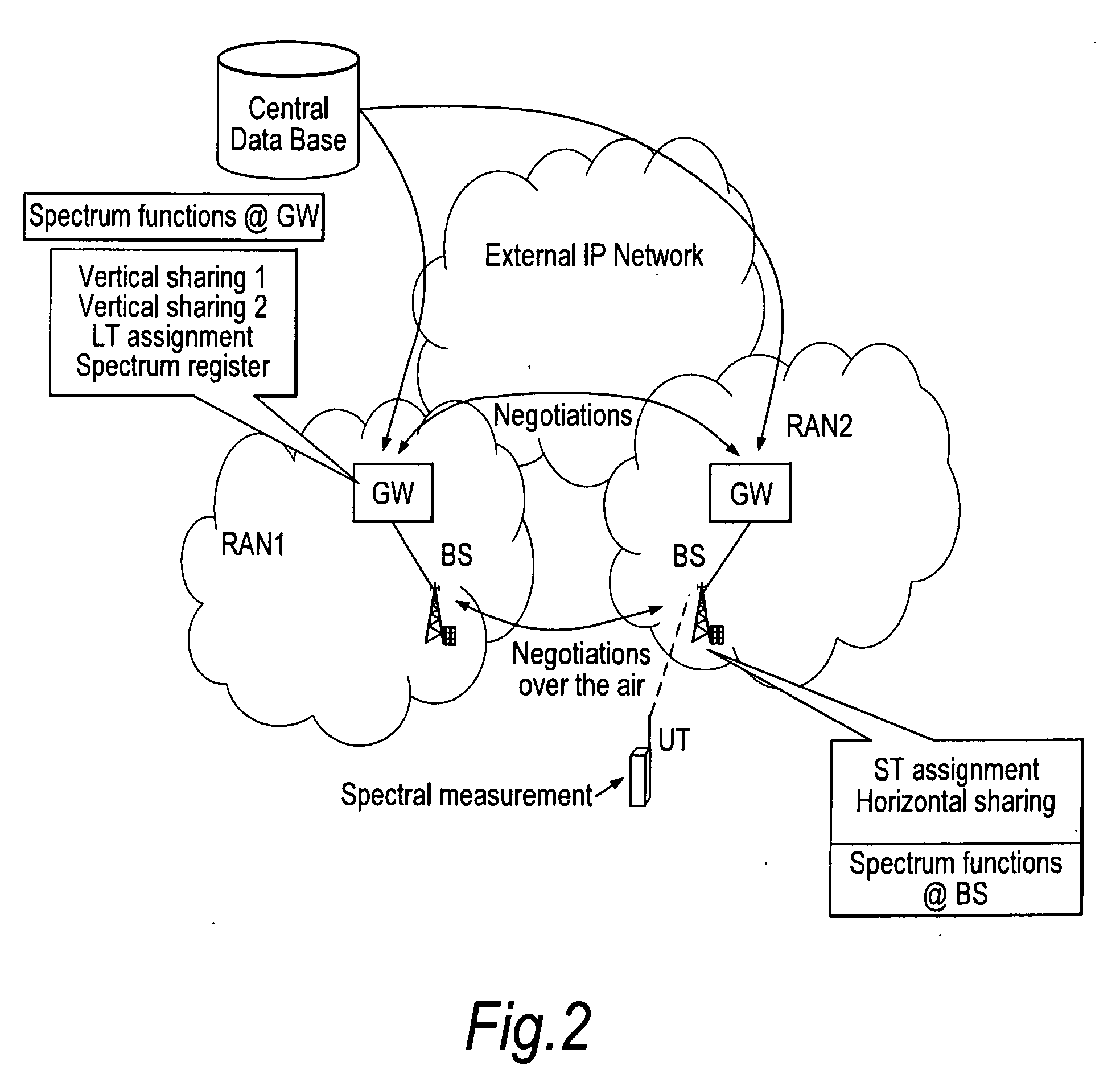Communication systems
a communication system and wireless communication technology, applied in the field of interference mitigation in wireless communication systems, can solve the problems of affecting the level of interference, and the interference of radio transmissions occupying the same parts of the shared communication spectrum. to achieve the effect of reducing the interference level
- Summary
- Abstract
- Description
- Claims
- Application Information
AI Technical Summary
Benefits of technology
Problems solved by technology
Method used
Image
Examples
Embodiment Construction
[0068]A system for spectrum sharing and coexistence of system apparatuses, including the possibility of spectrum exchange between two or more RANs has been considered, for the purposes of attaining better utilisation of spectrum for wireless mobile networks. An example of such a system is the WINNER project already mentioned, which is currently under development.
[0069]FIG. 2 is a schematic diagram of simplistic network architecture useful for understanding the concept of spectrum sharing. The network ofFIG. 2 may to some extent be compared to the schematic diagram of FIG. 1. The basic idea is to enable independent RANs (Radio Access Networks) to use each other's spectrum when it is not needed. Negotiations between different RANs may be carried out by communications between the gateways of those RANs. The independent RANs may use the same technological standards (radio access technology), as envisaged in WINNER for example. On the other hand, the RANs may use different standards whil...
PUM
 Login to View More
Login to View More Abstract
Description
Claims
Application Information
 Login to View More
Login to View More - R&D
- Intellectual Property
- Life Sciences
- Materials
- Tech Scout
- Unparalleled Data Quality
- Higher Quality Content
- 60% Fewer Hallucinations
Browse by: Latest US Patents, China's latest patents, Technical Efficacy Thesaurus, Application Domain, Technology Topic, Popular Technical Reports.
© 2025 PatSnap. All rights reserved.Legal|Privacy policy|Modern Slavery Act Transparency Statement|Sitemap|About US| Contact US: help@patsnap.com



